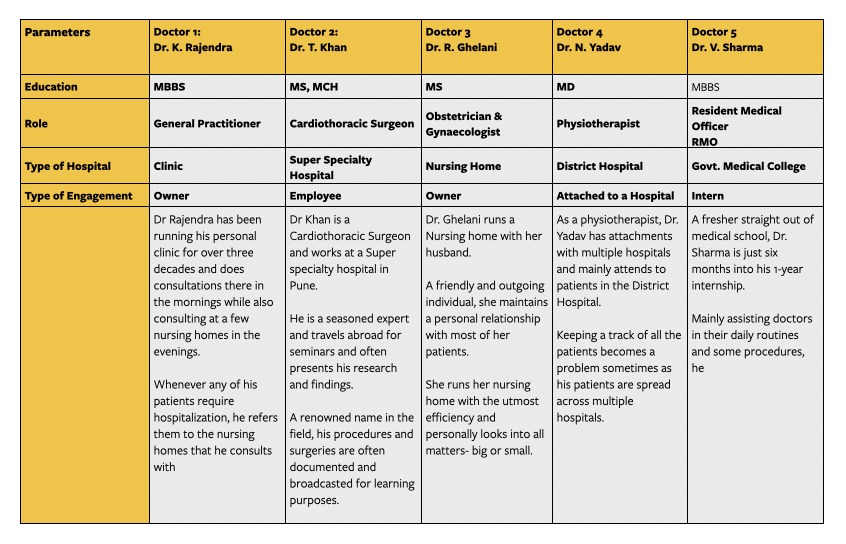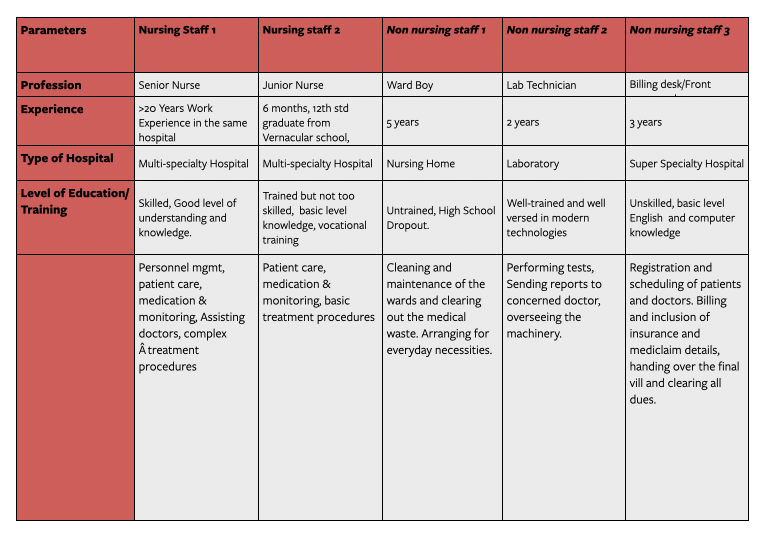Designing a Transformative HIMS Platform
Re-imagining a Hospital Information Management System for a leading Health-Tech provider in Middle East and Asia to prepare it for the future of healthcare and improve patient outcomes.

CLIENT
Kameda Infologics
YEAR
2019
TEAM / CREDITS
Lemon Design
Art Direction: DS Baoni
Copywriting: Yash
The product is an innovative Healthcare Information Management System (HIMS) that is reshaping the way healthcare institutions operate. By integrating clinical, financial, and administrative processes, it delivers a wide range of benefits, from improved patient safety to enhanced resource utilization. This case study explores the transformative impact of the platform on healthcare organizations and highlights its ability to streamline workflows, reduce costs, and drive better patient outcomes.
The Opportunity
Re-designing a Hospital Information Management System for a leading Health-tech provider in Middle East and Asia
A leading healthcare technology provider with 100+ years in business across the Middle East and Asia, was preparing its enterprise-grade HIMS, for the next phase of growth. As adoption scaled and user needs evolved, there was a clear opportunity to redesign the platform for greater efficiency, usability, and long-term flexibility. I led the product discovery and experience vision, working closely with client-side tech and data teams to ensure the platform was designed for the future of healthcare ecosystems.
Legacy System - Modernise overall look and feel
Cumbersome experience - Reduce steps - clicks & mouse miles
Approach: Systems Thinking + Human-Centred Design

Discovery & Findings
We began by aligning business goals with real-world user needs. Our research plan focused on providing detailed insights into the three key areas -

01 Product Audit & Insights
Analyzing existing product, data systems and functionalities to assess their effectiveness and alignment with goals.
Information architecture needed realignment with actual hospital workflows
High interaction load - multiple clicks, pop-ups, scattered data - led to fatigue and wastage of time, increased errors
Users required clearer prioritisation of tasks and patient-critical information
A wide range of digital comfort levels across roles demanded interface adaptability

02 Understanding Healthcare Systems & Insights
Understanding the structure and function of various healthcare systems to identify opportunities for improvement.
Primary research across 3 hospitals in Pune
5+ interviews with doctors and care staff
Observation of role-based workflows (clinical, admin, diagnostic)
Study of global frameworks and healthcare technologies (HL7, FHIR)

03 Stakeholder Personas, Journeys & Insights
Mapping the different stakeholders within the healthcare ecosystem to better address their needs and challenges. Defined core user journeys for doctors, hospital staff, caregivers, and patients: mapping goals, challenges, information flow and decision moments/stress points across the care cycle.

Clarity
Identifying patterns & challenges
Defining key problems
Articulating a brief


Design Brief
Comprehensive platform to enhance the overall healthcare experience by helping providers with simple, efficient, uninterrupted workflows (> improve patient outcomes)*
To create a comprehensive, future-ready platform that simplifies healthcare delivery by:
Simplify and reduce the work of healthcare providers
Improve work flow and reduce clinical errors
Deliver a integrated experience by management of all hospital resources- information, personnel & infrastructure in one place
* Save lives, Improve quality of healthcare, Reduce costs of healthcare
The Larger Vision
Digital Ecosystem to effectively treat & manage chronic conditions by enabling continued self-care and improving communication between supporting stakeholders
Improve patient participation - patient generated data
engage formal and informal caregivers
Create healthcare communities to tap into Big Data in Healthcare
Ideation

Information Architecture


User Flows






Solutions
BUSINESS VALUE ADD
The Workspace :
Modular, role-specific dashboards designed for clarity, speed, and focus. Each workspace surfaces what’s most relevant to the user’s role, reducing friction and enabling faster actions.
Modular - customisable based on specific requirements > increased screen space, access to relevant data
Managing patient care holistically - OPD, triage, task management
Assistive > DSS, IoT, predictive text, personalised library
From EMR (Electronica Medical Records) > to Workspace for healthcare providers
From EMR to Adaptive, Modular Provider-Centric Workspace
To support the diverse and concurrent tasks performed by healthcare providers more smoothly, I designed a modular, component-based workspace that allows users to personalise their environment based on workflow priorities, similar in philosophy to Adobe's customizable workspaces.
Each functional module such as EMR, patient queue, search, report, medication, etc. is built as an independent UI component with four progressive interaction states, enabling context-sensitive visibility and control.
Each functional module (EMR, OPD, Search, Labs, etc.) now operates within a four-state adaptive layout:
A – Active: Full-screen primary view for focused workflows
B – Balanced: Partial view (~25% screen) for concurrent tasks
C – Compact: Summary with limited interactions
O – Iconic: Collapsed icon view for passive or low-priority modules
This A–B–C–O interaction model allows users to fluidly resize modules based on task relevance. The result is a personalised, responsive workspace, reducing screen fatigue, maintaining context, and supporting complex, multitiered hospital workflows.
DESIGN VALUE ADD
The Timeline : A Clearer Clinical Picture
A unified, chronological patient history which integrates vitals, medication, test results, and clinical notes to support safer, better-informed decisions.
Comprehensive overview of the patient's medical history
Infographic > for better analysis and acts as a visual aid
Identify patterns / gaps, track progress, & assess effectiveness of treatments
Patient Empowerment - Accessible view of their own healthcare journey - track appointments, test results, and treatments, add information.
The Patient Timeline was designed to address a persistent gap: fragmented, hard-to-interpret, incomplete patient histories. Doctors consistently cited this as both the first information they need and the least reliable. We reimagined it as a dynamic, infographic-style view that consolidates Clinical notes, Vitals, Medications, Investigations and other Patient-generated data
This visual timeline enables clinicians to spot patterns, track progression, and orient quickly in time-sensitive contexts. Structured yet flexible, it becomes a single source of truth, minimising cognitive effort and improving diagnostic confidence.

TECHNOLOGICAL VALUE ADD
The Ecosystem
Designing for Connected, Continuous Care - To extend care beyond episodic visits and support real-time collaboration, I designed an ecosystem of user-focused modules that connect doctors, patients, labs, and caregivers, both formal and informal.
Conclusion
A Strategy-Driven Redesign, Empowering Providers, Enhancing Outcomes: A Human-Centred HIMS Ecosystem
This redesign was not just about modernising an existing HIMS, it was about preparing the Product for the future of healthcare delivery. By grounding the experience in real hospital workflows and aligning it with global best practices, we created a platform that is modular, intelligent, and adaptable across roles and regions.
One of my most significant contributions, the Patient Timeline, was recognised by the client as a breakthrough solution, addressing a critical clinical need: fast, clear, and reliable access to patient history. Its infographic structure and real-time integration of patient-generated data transformed a previously fragmented view into a powerful clinical decision tool.
The product now enables:
Faster clinical assessments
80% reduction in medication errors
30% increase in staff productivity
Improved resource utilization and auditability
Enhanced patient safety and reduced wait times
By designing user-focused modules, enabling cross-role collaboration, and building an ecosystem that includes patients, providers, and caregivers, the redesigned Product is now a future-ready digital backbone for healthcare institutions, improving not only efficiency, but also quality of care and patient outcomes at scale.

























